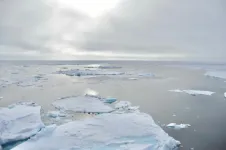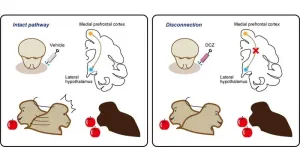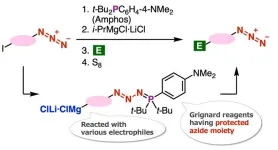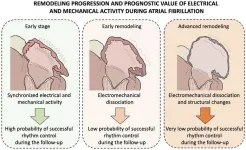(Press-News.org) A subpolar species associated with Atlantic water expanded far into the Arctic Ocean during the Last Interglacial, analysis of microfossil content of sediment cores reveals. This implies that summers in the Arctic were ice free during this period. The findings are published in Nature Geoscience.
Arctic sea ice, an important component of the Earth system, is disappearing fast under climate warming. Summer sea ice is anticipated to vanish entirely within this century. To gain a deeper understanding of the climate dynamics in a world without Arctic sea ice, researchers have turned to analogues from the geological past.
”The Last Interglacial, between 129,000 and 115,000 years BP, is an interesting period to study because it is the last time in Earth’s history when global average temperatures were similar or perhaps higher than currently and sea levels were considerably higher, up to +6 to +9 m,” said Flor Vermassen, postdoctoral researcher at Stockholm University.
However, the extent of sea ice during this period has been intensely debated and there is no consensus, limiting understanding of this period and the ability of researchers to simulate it in climate models. To address this, a team of marine geology researchers from the Department of Marine Geological Sciences at Stockholm University analysed the microfossil content of an array of sediment cores from sites that today lie directly beneath the thickest parts of the modern Arctic ice pack. In these cores, they investigated the variability in the occurrence and composition of planktonic foraminifera, a type of free-floating, shell-building unicellular zooplankton that is sensitive to changes in oceanographic and environmental conditions.
The researchers found high abundances of the typically subpolar, Atlantic-water species Turborotalita quinqueloba, documenting a large-scale expansion of the species far into the central Arctic Ocean. The ecological preference of T. quinqueloba for predominantly ice-free, seasonally productive waters typically present in the Atlantic Ocean suggests that it was following similar conditions that had spread to the central Arctic Ocean. The absence of summer sea ice and increased influence of Atlantic currents in the Arctic domain during the Last Interglacial are analogous to ocean transformations being observed today in parts of the Arctic, and collectively referred to as ‘Atlantification’ of the Arctic Ocean.
”The finding that the Arctic Ocean was seasonally ice-free during the Last Interglacial is worrying because this period would have been only around 1.5°C above pre-industrial levels, comparable to the targets of the Paris Agreement. Yet the global sea level is estimated to have been several meters higher than at present,” said Flor Vermassen.
Hence, the researchers propose the Last Interglacial as the most recent and potentially most relevant geological epoch for investigating a seasonally ice-free Arctic Ocean, particularly if the objectives of the Paris Agreement are not exceeded.
”To fully comprehend the physical conditions and environment of this unfamiliar Arctic during the Last Interglacial, additional quantitative proxy reconstructions of sea-surface temperature and other water mass parameters are needed, along with targeted climate and oceanographic model studies of the same period,” said Flor Vermassen.
END
Invasion of the Arctic Ocean by Atlantic plankton species reveals a seasonally ice-free ocean during the last interglacial
2023-08-04
ELSE PRESS RELEASES FROM THIS DATE:
In Germany, women vote more left-wing – but that was not always the case
2023-08-04
For several years now, women have been voting more left-wing than men. This trend first appeared in the 2017 German general election and intensified in 2021. This is shown by a study carried out by the sociologist Dr Ansgar Hudde from the Institute of Sociology and Social Psychology at the University of Cologne (UoC). The trend is most evident among the youngest voters aged 18 to 24: In this group, the Greens, the Left and the Social Democrats (SPD) are much more popular among women than among men; the radical right-wing AfD and, above all, the economically liberal FDP are much more popular among men. The Christian ...
They got more than me! The brain circuit for socially subjective reward valuation
2023-08-04
Okazaki, Japan – Although you might never have consciously considered it, it’s very likely that when you receive a reward, part of the value that you place on it depends on what other people have received as similar rewards. In a recent study published in Nature Communications, Japanese researchers have identified an important brain circuit for this specific process.
Although researchers have identified the brain regions that are important for deciding the value of a reward in relation to those of others (a process the authors termed ‘socially subjective reward valuation’), the connections between these regions have never been ...
ASBMB calls for student loan relief
2023-08-04
On June 20, the American Society for Biochemistry and Molecular Biology submitted public hearing testimony to the Department of Education expressing concerns about the growing burden of student loan debt. The society called for expanding debt-relief programs across all educational levels and allowing postdoctoral researchers to defer loan payments until after completion of their training.
“We are in the midst of a student debt crisis, and it's hurting the research enterprise and more importantly, the next generation of scientists,” Sarina Neote, ASBMB public affairs director, said. “The average student ...
Scientists develop novel method to synthesize azide compounds for wider industrial applications
2023-08-04
Azide compounds play a pivotal role for subsequent synthesis of organonitrogens such as amines and triazoles that are essential compounds in organic and materials chemistry. Triazoles that can be synthesized by the ‘click’ reaction have attracted attention in the development of pharmaceuticals and other industries. However, the azido groups are electrophilic and are susceptible to various nucleophiles such as carbanions. This poses a significant challenge for the synthesis of carbanions having azido groups.
To this end, a team of researchers from Japan, led by Associate Professor Suguru ...
Telehealth Week @ TTUHSC Conference to highlight digital health care
2023-08-04
Telehealth Week @ TTUHSC, a conference about digital innovation, will offer an immersive experience in digital health using technology for access to care. The free conference, which takes place Sept. 19-21 at the TTUHSC Academic Event Center located at 3601 Fourth St., is open to all clinicians, administrators, health care providers and stakeholders.
The conference aims to demonstrate how digital health enhances access to care and solves rural health disparities. Three goals of the conference include:
Exposing stakeholders to the broader goals of digital health at TTUHSC
Motivating stakeholders to go beyond telehealth and embrace the fullness of digital ...
A new technique offers improved diagnostic precision and a route to personalized therapy for a common arrhythmia that affects more than 10 million people in Europe
2023-08-04
A multidisciplinary study led by scientists at the Centro Nacional de Investigaciones Cardiovasculares (CNIC) presents a new method for assessing the structural and electrophysiological changes, called atrial remodeling, produced in the heart of patients with atrial fibrillation, one of the most frequent forms of cardiac arrhythmia. The new diagnostic method is based on the simultaneous assessment of electrical and mechanical (contractile) activity in the heart atria during atrial fibrillation. The study is published in Nature Communications (DOI 10.1038/s41467-023-40196-y).
Study leader David Filgueiras explained that, until now, “this was an unmet challenge,” because, on the one ...
Prenatal diagnosis matters: Linked to earlier surgery for congenital heart disease
2023-08-04
A study from Ann & Robert H. Lurie Children’s Hospital of Chicago has shown that prenatal diagnosis, or diagnosis before a baby is born, is associated with earlier surgery for babies with congenital heart defects, the most common birth defects affecting nearly 1% of all live births. The association was demonstrated for critical defects (when heart surgery is required before the infant leaves the hospital) and certain types of noncritical defects, which constitute about 75% of all congenital heart defects.
The benefits of prenatal ...
Researchers find genetic cause of Raynaud’s phenomenon
2023-08-04
Researchers at Queen Mary University of London’s Precision Healthcare Research Institute (PHURI) and the Berlin Institute of Health (BIH) at Charité – Universitätsmedizin Berlin have identified the genetic causes of Raynaud’s phenomenon. Their findings, published today in Nature Communications, could lead to the first effective treatments for people with Raynaud’s.
Raynaud’s phenomenon (RP) is a heritable condition that affects blood circulation. It’s a vasopastic condition, which means ...
Consuming added sugars may increase risk of kidney stones
2023-08-04
Between 7% and 15% of people in North America, between 5% and 9% of people in Europe, and between 1% and 5% of people in Asia suffer from kidney stones. Common symptoms are severe pain, nausea, vomiting, fever, chills, and bloody urine. But kidney stones don’t just reduce the quality of life: in the long run, they may lead to infections, swollen kidneys (hydronephrosis), renal insufficiency, and end-stage renal disease. Known risk factors for developing kidney stones include being an adult male, obesity, chronic diarrhea, dehydration, and having inflammatory bowel disease, diabetes, or gout.
Now, a ...
Tropical plant native to China reveals antiobesity potential
2023-08-04
Obesity, a major risk factor for various lifestyle diseases such as diabetes and hypertension has become widespread worldwide, inherently demanding innovative solutions to combat it.
A multi-institutional research group led by Associate Professor Akiko Kojima of the Graduate School of Human Life and Ecology at Osaka Metropolitan University, has made significant progress in the fight against obesity. The group had previously conducted a study on the effects of the extract of Mallotus furetianus (MFE), a tropical plant native to Hainan Island, China, on the prevention of fatty liver, but the antiobesity effects of MFE and its mechanisms had not been ...







